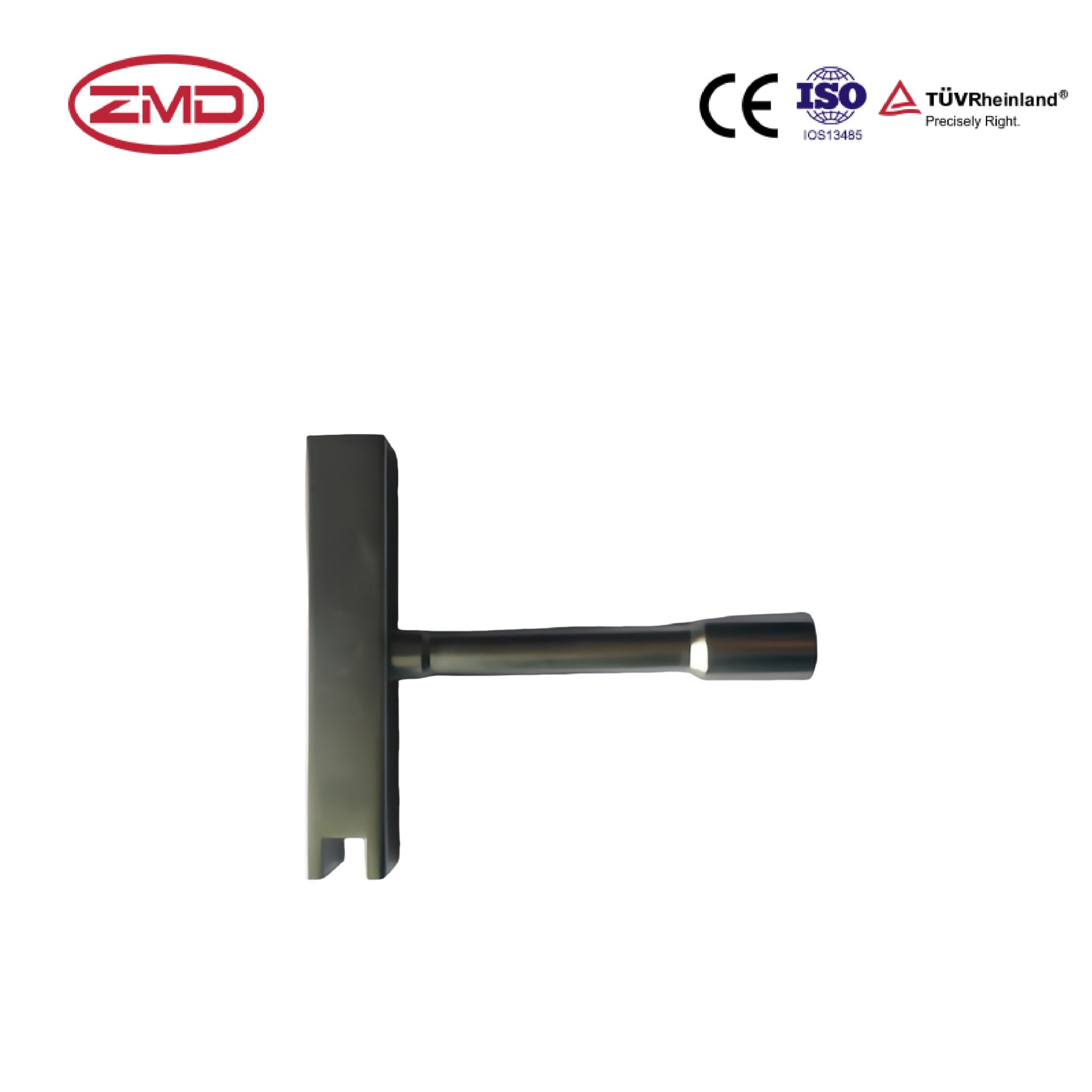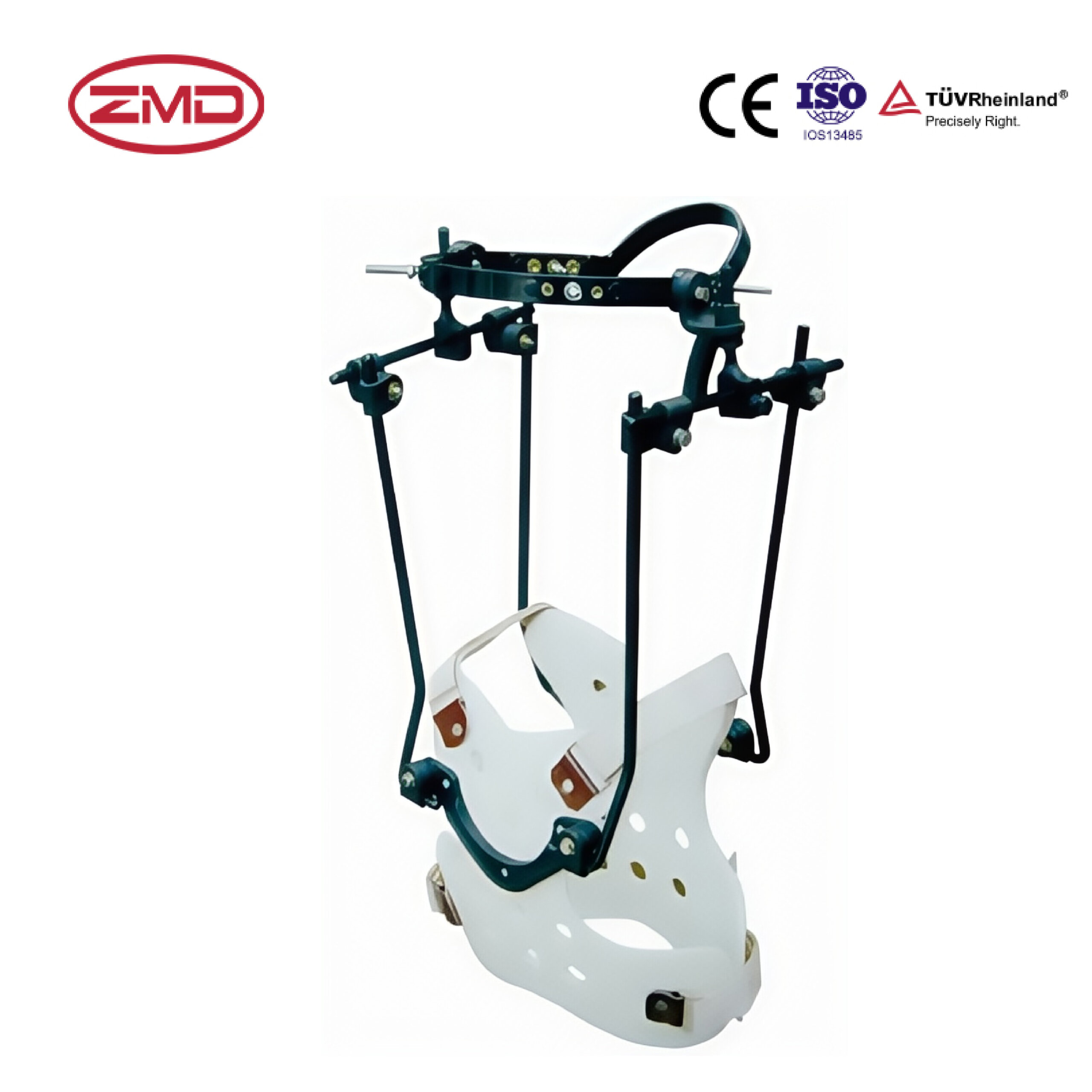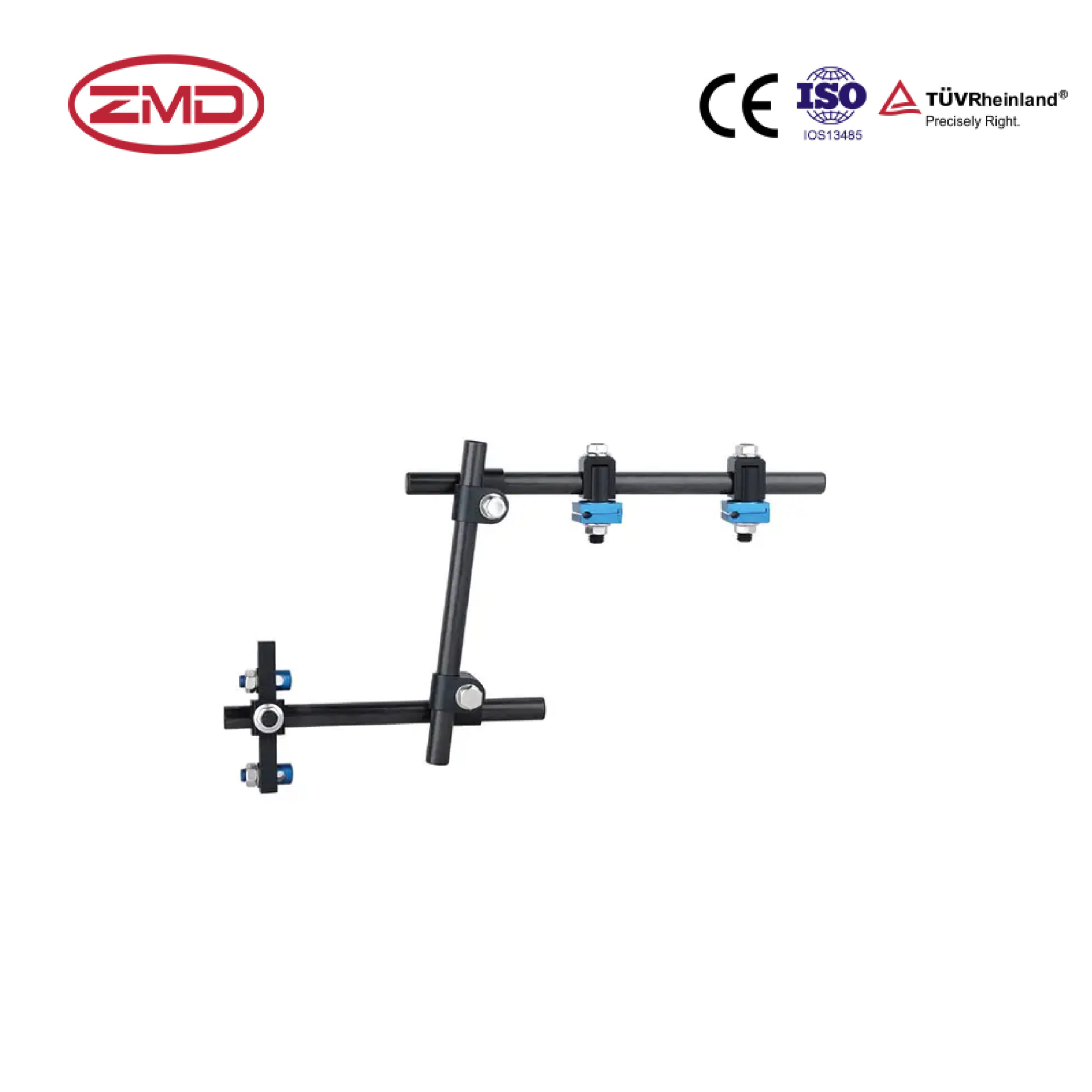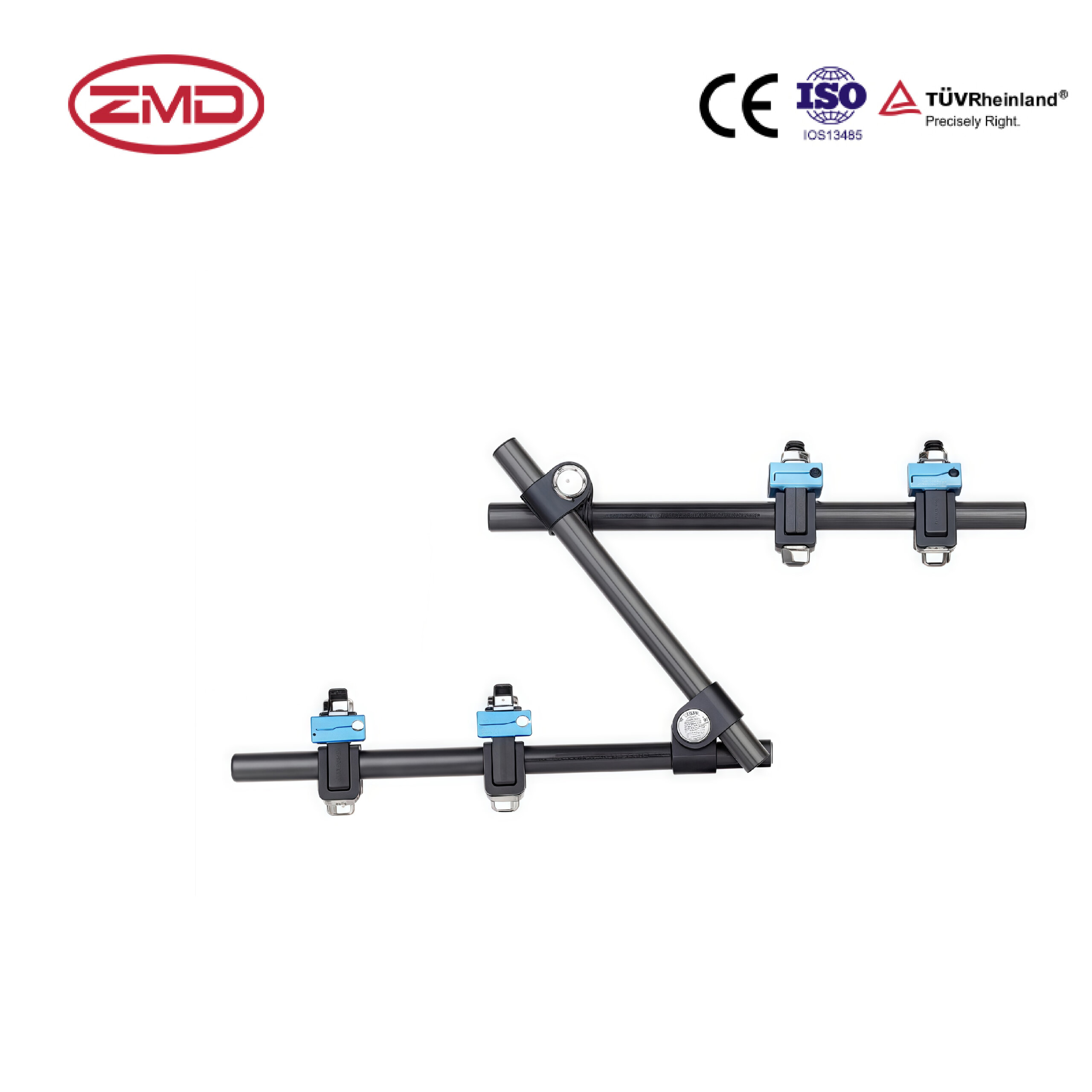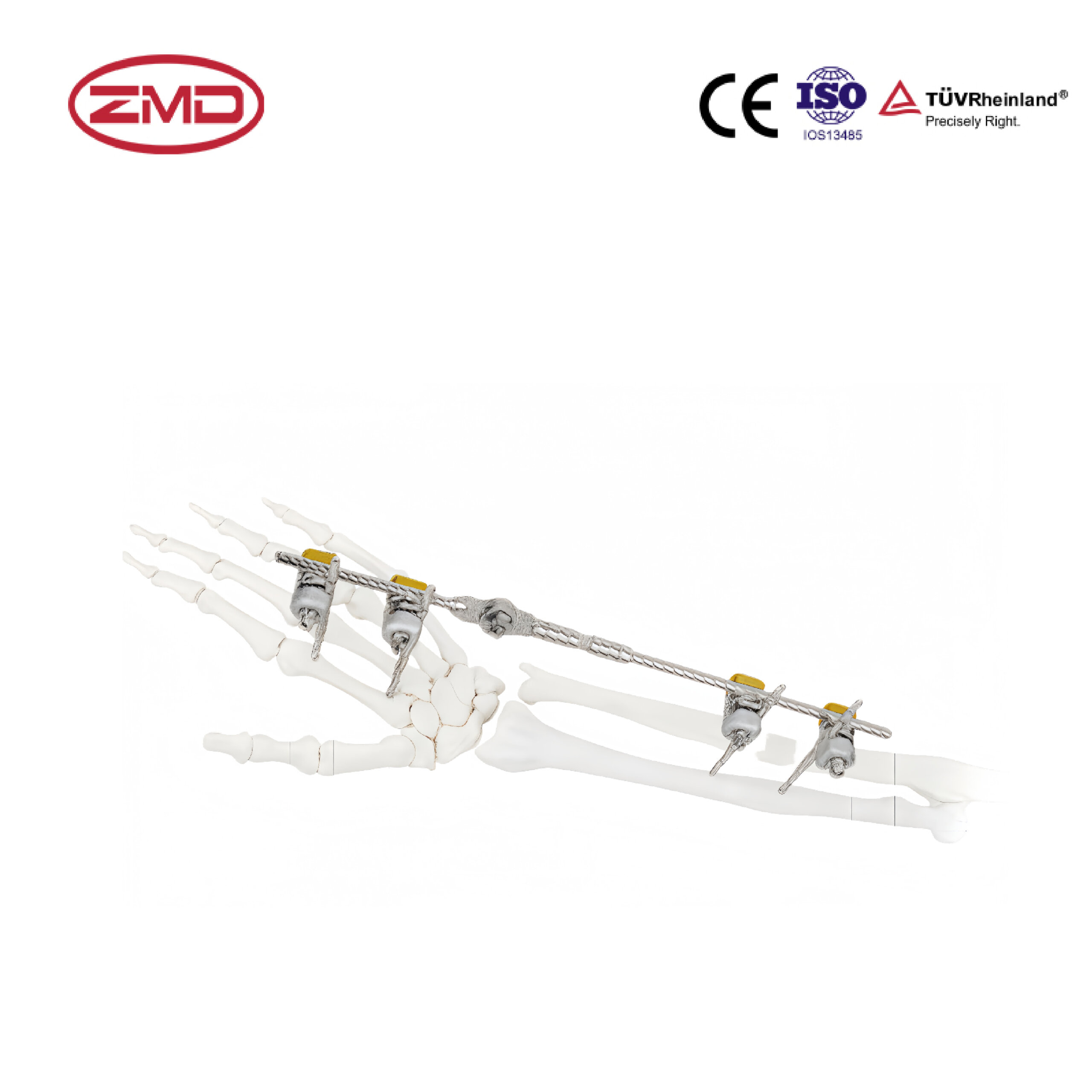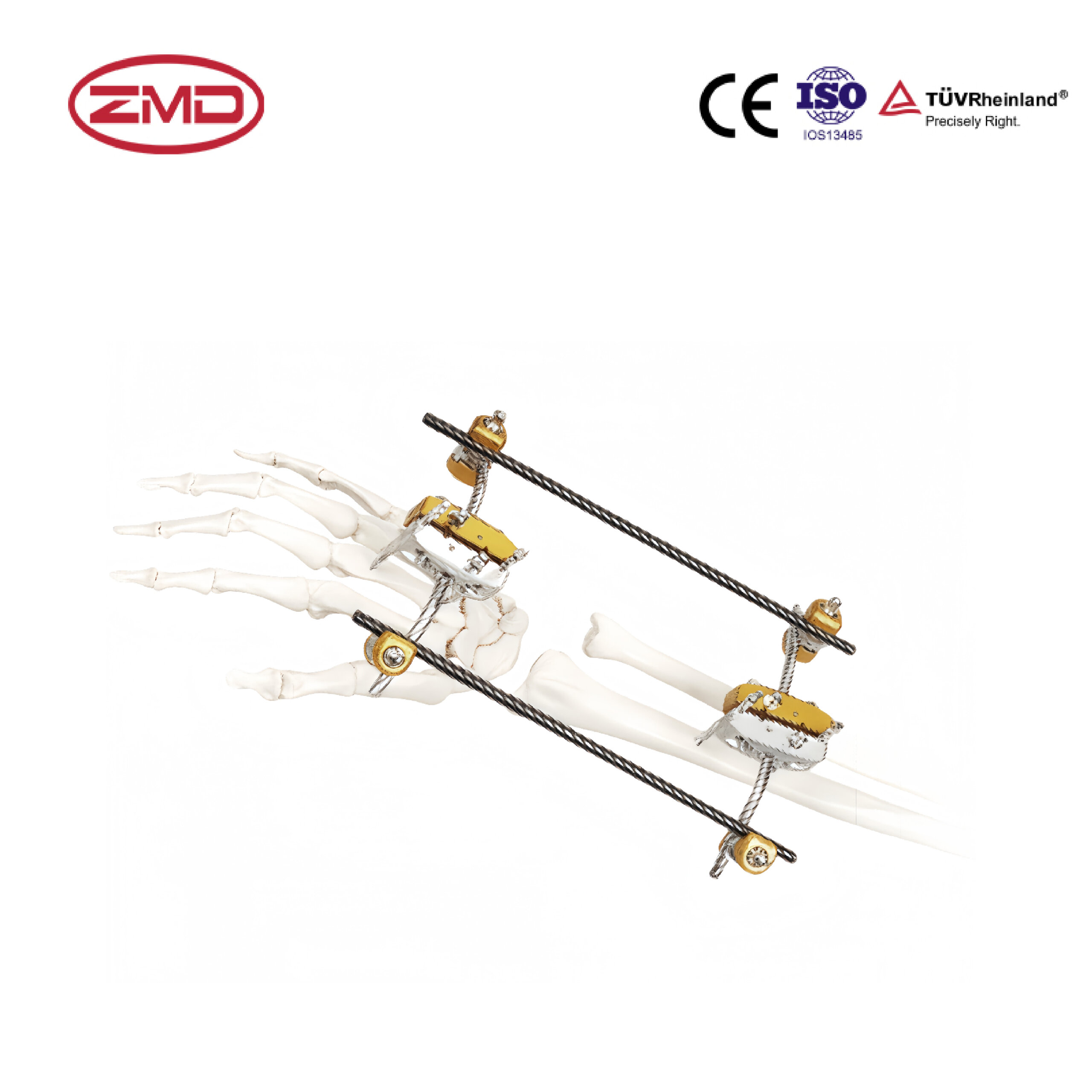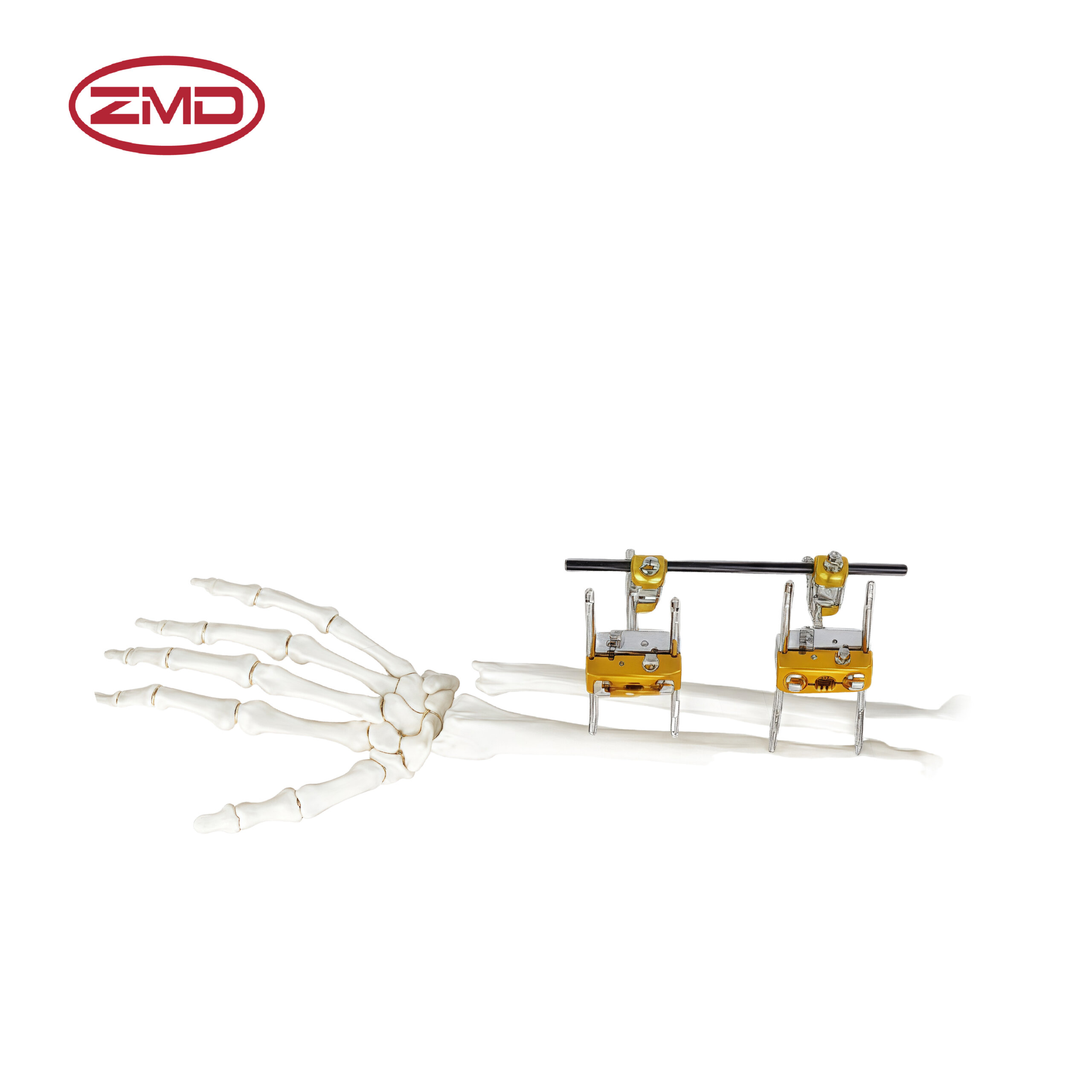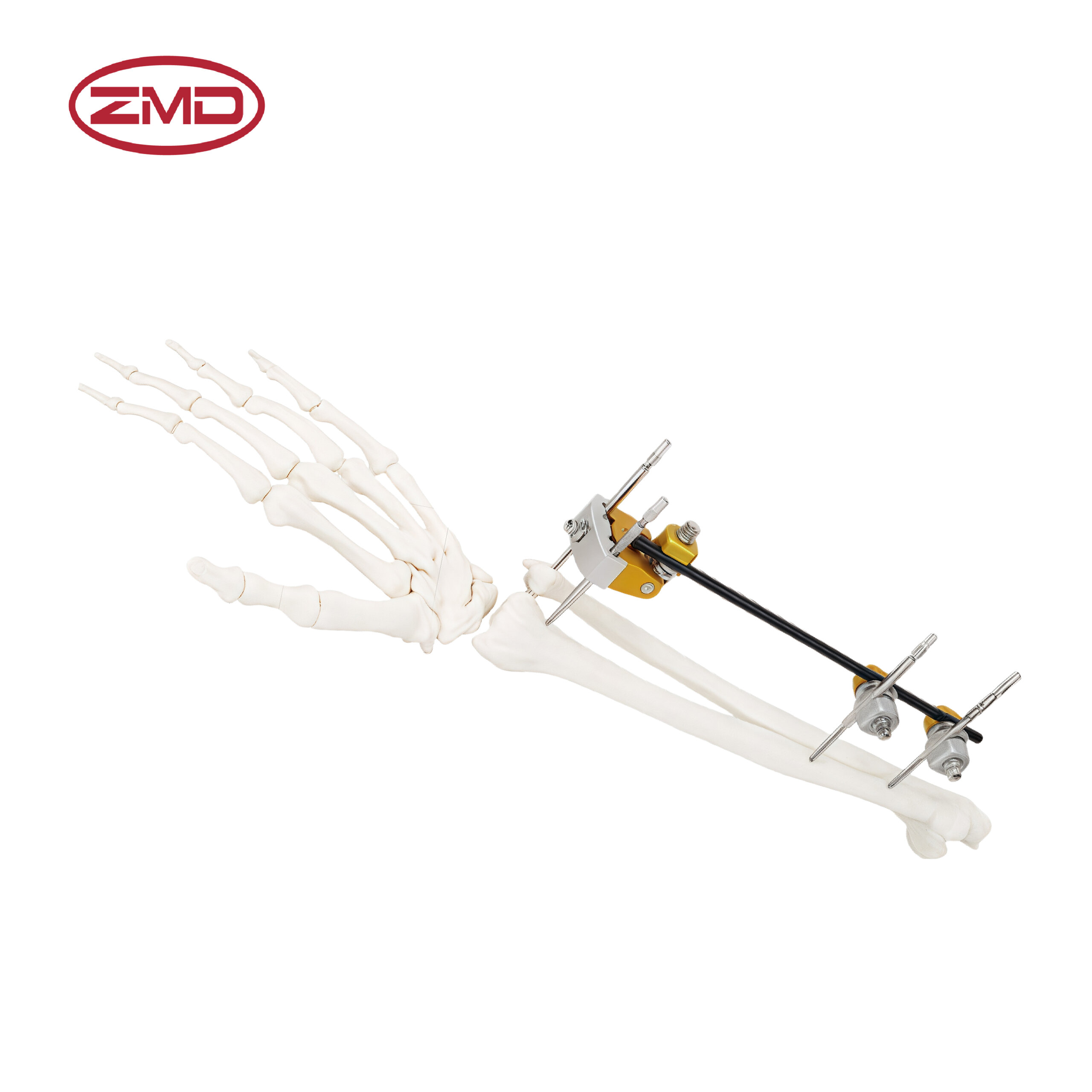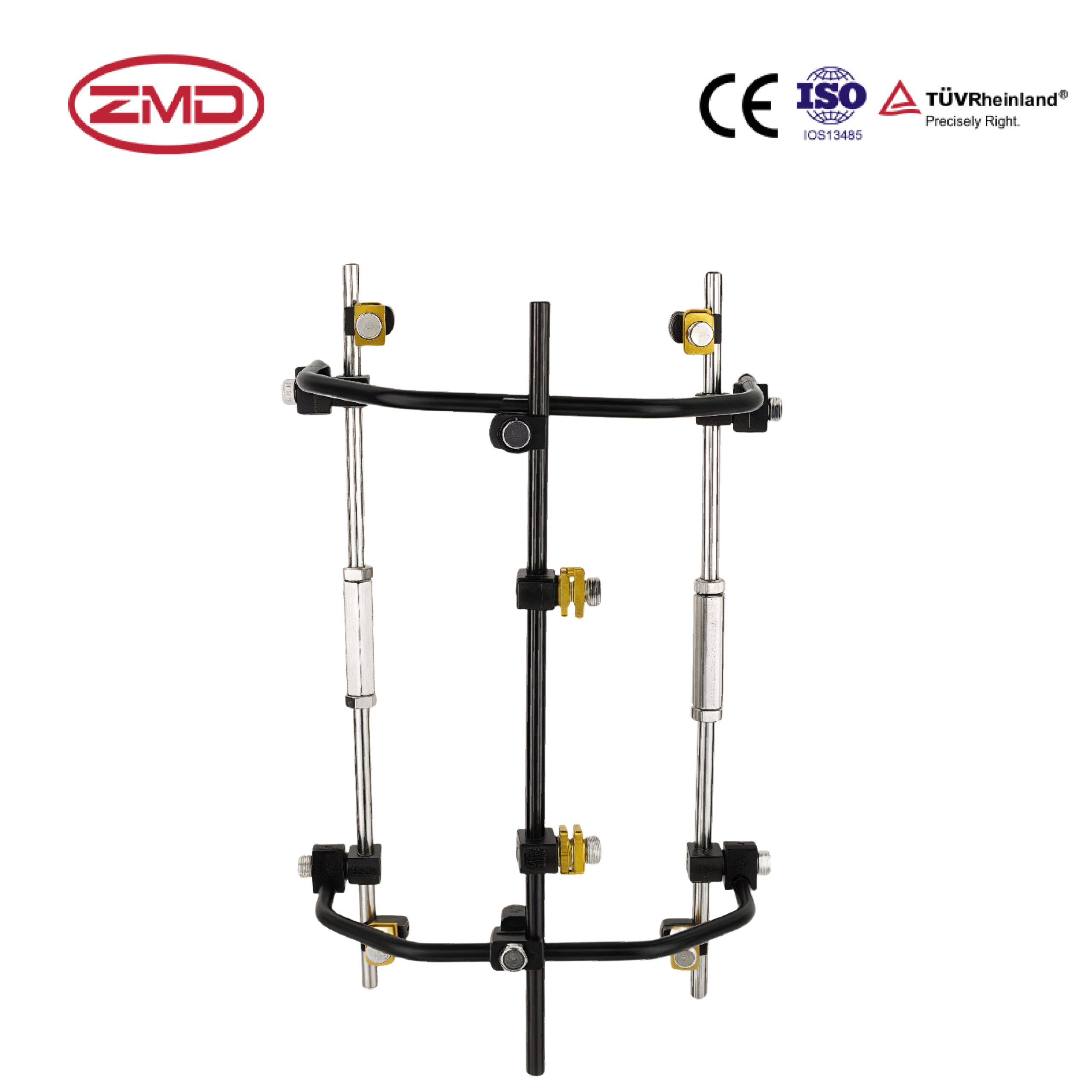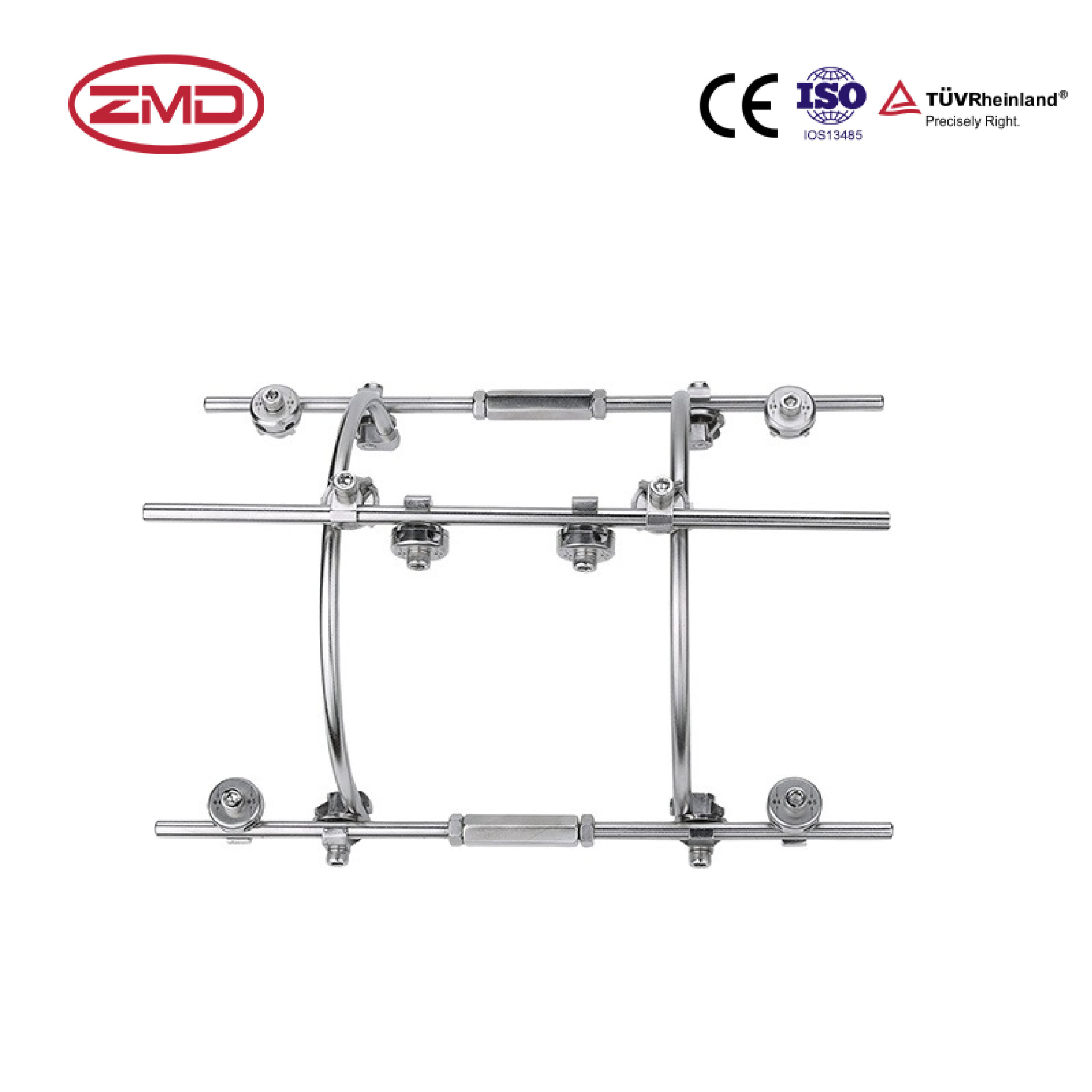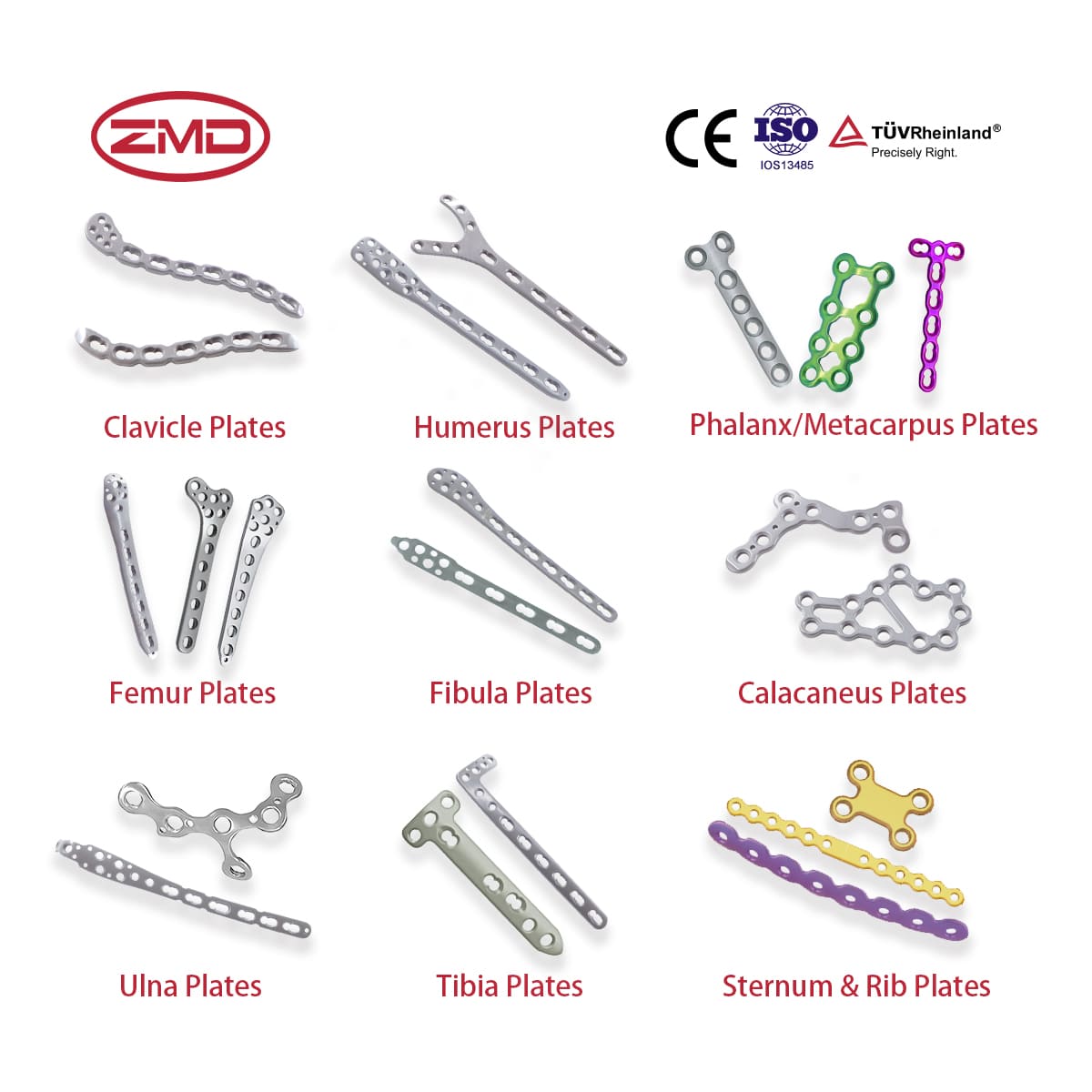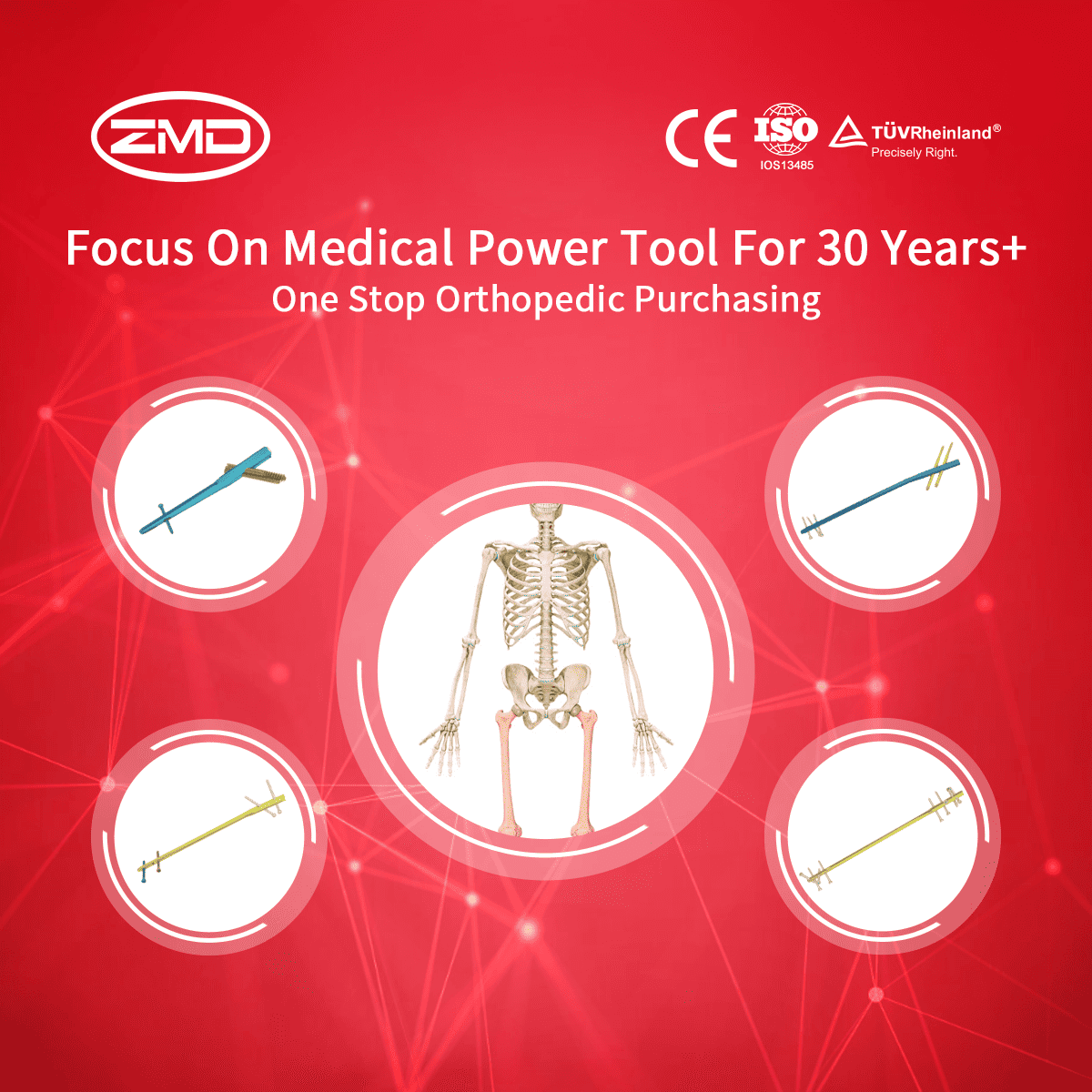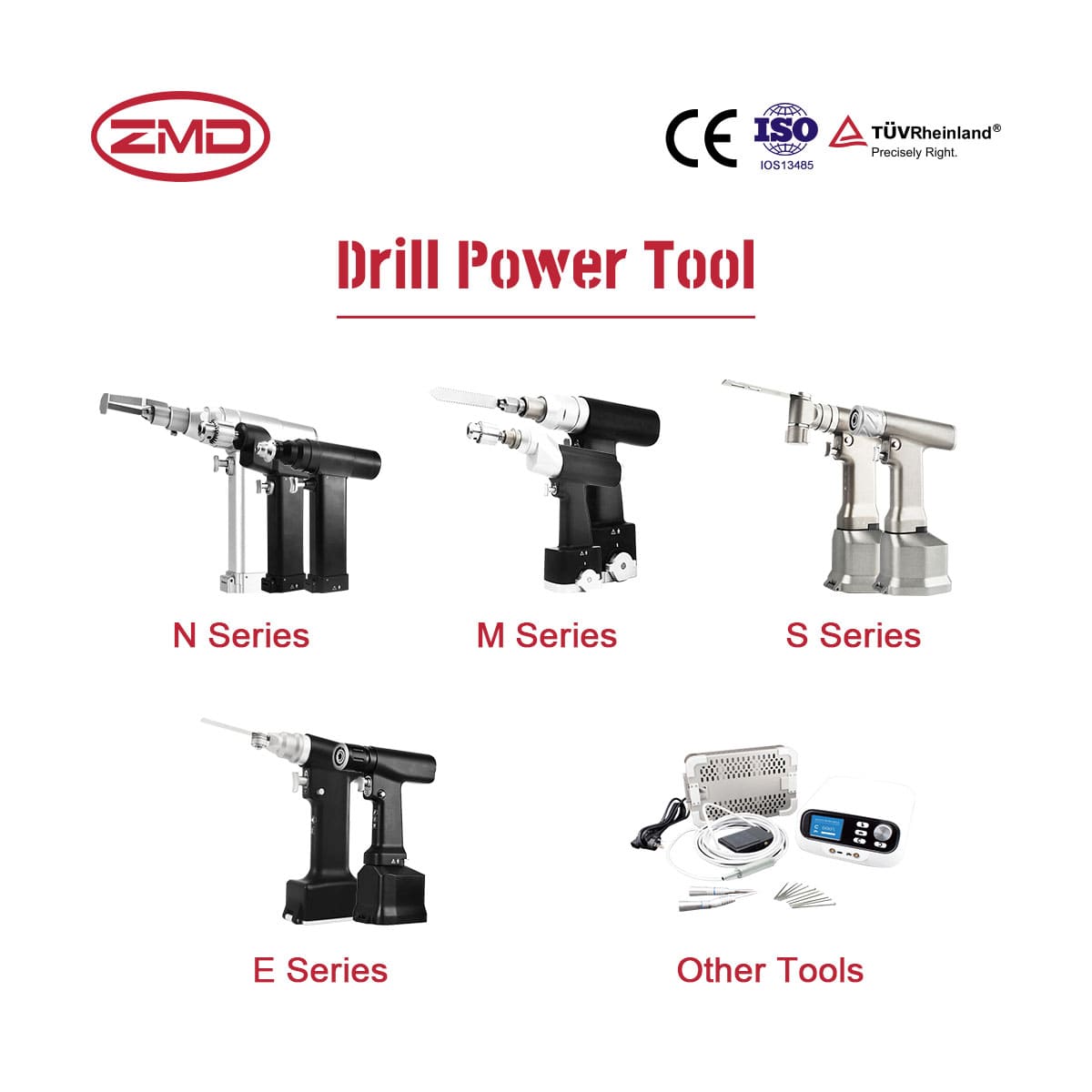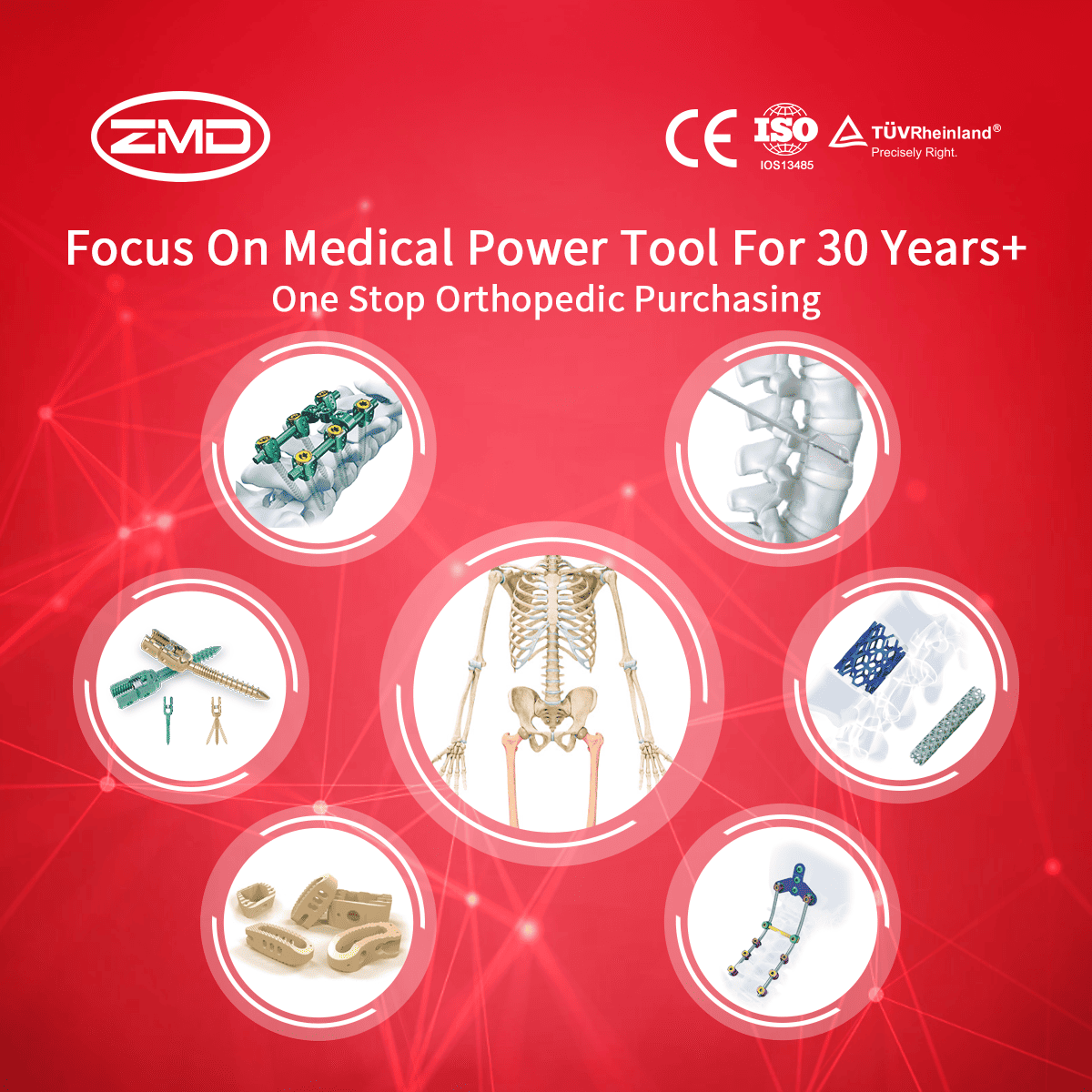Hoffmann External Fixation
ZMD
Orthopedic Products
Haven't been able to locate the product you're searching for yet?
If you're interested in more orthopaedic implant products, feel free to get in touch with our ZMD consultants.
What are Hoffmann External Fixation?
The minimally invasive aspect of Hoffmann external fixation is a significant advantage. It requires relatively small incisions for the insertion of pins or wires into the bone. This is in contrast to more invasive open surgical procedures for internal fixation. For example, in a fracture case, the small incisions made for the Hoffmann fixator’s pin insertion result in less trauma to the surrounding soft tissues. This means reduced pain for the patient during the recovery process. There is also a lower risk of infection as the smaller wounds are less likely to be a site for bacteria to enter and cause complications. Additionally, the minimally invasive nature allows for a quicker recovery time overall. Patients may experience a shorter hospital stay and can often return to their normal activities sooner compared to more invasive procedures
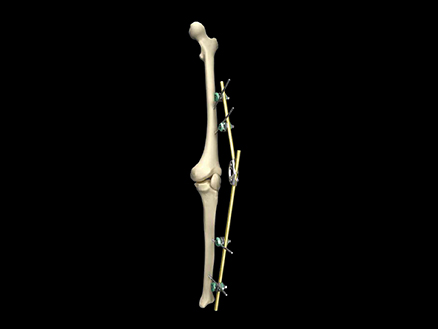
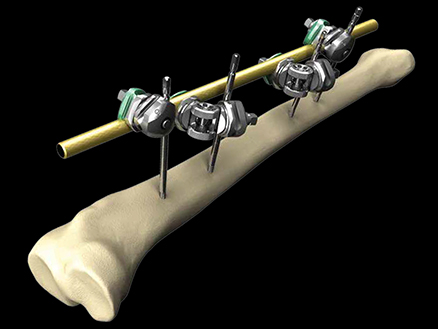
When is Hoffmann External Fixation Needed?
When a bone fracture is accompanied by an open wound, Hoffmann external fixation offers significant advantages. Its minimally invasive nature means that the pins can be inserted through small incisions in the skin, minimizing additional trauma to the already damaged soft tissues. The external frame provides immediate stability to the bone while allowing for easy access to the wound for cleaning, dressing changes, and monitoring for signs of infection. This dual benefit helps in managing both the bone injury and the soft tissue damage simultaneously, improving the overall prognosis for the patient.
Complex Fractures
- Open Fractures: Open fractures present a significant challenge due to the exposure of the bone and potential contamination of the wound. Hoffmann external fixation is highly advantageous in such cases. The minimally invasive nature of inserting the pins for the fixator through small skin incisions helps to minimize further soft tissue damage. The external frame then stabilizes the bone fragments effectively. For example, in a tibial open fracture, the fixator can hold the broken pieces of the tibia in place, allowing for proper wound management. This includes regular cleaning, debridement, and the application of antibiotics to prevent infection. The stability provided by the Hoffmann fixator also aids in the proper alignment of the bone fragments, which is essential for the healing process.
- Comminuted Fractures: When a bone is shattered into multiple fragments (comminuted fractures), conventional fixation methods may struggle to hold all the pieces in the correct position. Hoffmann external fixation offers a solution. The pins can be inserted into each individual fragment, and the external frame adjusted to maintain the alignment of the numerous fragments. This ensures that the bone fragments are properly positioned relative to each other, enabling the body’s natural bone – healing mechanisms to work effectively. For instance, in a comminuted fracture of the femur, the Hoffmann fixator can capture all the broken parts and keep them stable, allowing new bone tissue to form around the fragments and gradually knit them back together.
- Intra-articular Fractures: Fractures that extend into a joint require precise alignment to maintain proper joint function. Hoffmann external fixation can provide the necessary stability and allow for fine adjustments in the alignment of the fragments within the joint. The ability to make gradual and precise changes in the position of the bone helps to restore the normal anatomy of the joint. For example, in an intra – articular fracture of the ankle joint, the Hoffmann apparatus can be used to hold the fractured bone segments in the correct position, reducing the risk of post – treatment joint problems like arthritis or limited range of motion.
- Fractures in Osteoporotic Bone: Osteoporotic bones are weaker and more prone to fractures. Internal fixation methods may not always be ideal as the bone may not be able to hold screws or plates firmly. The Hoffmann external fixator distributes the forces over a larger area through its pin and frame system. This reduces the stress on any single point of the bone and provides stable support for the fractured segments. For example, in an elderly patient with a vertebral fracture due to osteoporosis, a Hoffmann – like external fixation device (in some cases adapted for spinal applications) can help stabilize the bone and allow for healing while minimizing the risk of further damage to the already weakened bone structure.
Non-unions
- Delayed Unions: When fractures take longer than expected to show signs of union (delayed unions), Hoffmann external fixation can enhance the healing process. It provides additional stability by firmly holding the bone fragments in place, reducing any micromotion that might be inhibiting bone growth. The ability to make small adjustments to the apparatus can also optimize the mechanical environment around the fracture site, stimulating the body’s bone – forming cells to deposit new bone tissue. For instance, if a humeral fracture has not healed after several months of initial treatment, applying a Hoffmann fixator can create a more favorable setting for the bone to finally unite.
- Non-unions: In cases where fractures completely fail to heal and form a false joint (non-unions), the Hoffmann technique can be a game – changer. The fixator can apply compression or distraction forces as needed. Compression can be used to bring the bone fragments closer together, promoting bone bridging and the formation of new bone. In some situations, distraction might be employed to stimulate the body’s natural process of bone regeneration by creating a small gap that the body then fills with new bone. For example, in a non-union of the tibia, the Hoffmann apparatus can be adjusted to apply the appropriate forces to encourage the bone to heal and restore its structural integrity.
Deformity Correction
- Angular Deformities: When bones are bent at abnormal angles, Hoffmann external fixation allows for gradual correction. The orthopedic surgeon can make incremental adjustments to the frame of the fixator, which in turn apply gentle corrective forces to the bone. Over time, the bone remodels in response to these forces and straightens out. For example, a child with a congenital valgus deformity of the tibia can undergo treatment with the Hoffmann fixator. The device can be adjusted over weeks or months to slowly correct the deformity, enabling the bone to grow in a more normal alignment and improving the limb’s appearance and function.
- Limb Length Discrepancies: Differences in leg length can lead to gait problems and pain. The Hoffmann external fixator, combined with distraction osteogenesis techniques, can be used to gradually lengthen a shorter limb. The apparatus is set up around the limb, and the frame is slowly extended at a controlled rate. As the frame is lengthened, the pins and frame maintain the alignment of the bone, and new bone forms in the gap created by the distraction. This allows for a precise and gradual increase in limb length, helping the patient achieve a more symmetrical gait and reduced pain. For instance, a patient who had a previous injury that resulted in a shorter leg can have the limb lengthened using the Hoffmann method to improve their mobility and quality of life.
Limb Salvage
- Infection Management: In severe cases of bone infections, limb salvage becomes a priority. The Hoffmann external fixator can stabilize the bone while antibiotics are administered. The external nature of the fixator enables easy access to the infected area for wound cleaning, debridement, and direct application of antibiotics if needed. It keeps the bone fragments in a stable position, preventing further damage and allowing the body’s immune system and the antibiotics to work together to fight the infection. For example, in a case of osteomyelitis (bone infection) in the femur, the Hoffmann fixator can support the bone while the infection is treated, increasing the chances of salvaging the limb rather than resorting to amputation.
- Soft Tissue Reconstruction: During soft tissue reconstruction procedures, stable support for the bone is essential. The Hoffmann external fixator provides that stability, allowing surgeons to focus on repairing and reconstructing the damaged soft tissues, such as muscles, tendons, or skin. For instance, in a case where there has been significant soft tissue loss due to trauma and the underlying bone is also affected, the Hoffmann apparatus can hold the bone in place while skin grafts or other soft tissue procedures are carried out to restore the limb’s function and appearance.
Temporary Stabilization
- Severe Trauma: In situations of severe trauma involving multiple fractures, immediate stabilization is crucial. The Hoffmann external fixators can provide this initial stabilization. They can be quickly applied to hold the fractured bones in place, reducing pain and preventing further damage to the bones and surrounding tissues. For example, in a polytrauma case where a patient has fractures in multiple long bones due to a car accident, the Hoffmann fixators can be used to stabilize the bones while the patient’s overall condition is stabilized and further treatment plans are formulated.
- Pending Definitive Surgery: Sometimes, surgery cannot be performed immediately, either due to the patient’s medical condition or logistical reasons. The Hoffmann external fixators can serve as a temporary measure to stabilize fractures during this waiting period. They keep the bone fragments in a stable position until the definitive surgical procedure can be carried out. For instance, if a patient with a complex fracture needs to have their overall health improved before undergoing a major reconstructive surgery, the Hoffmann fixator can maintain the bone’s position and integrity in the meantime
Blog
International Women’s Day: Salute to the “She – Power” at ZMD
International Women’s Day: Salute to the “She – Power” at ZMD Amid the trends of “Intelligent Medical Devices” and “Minimally Invasive Medical Technologies”, ZMD thrives
Discover Innovation with Sunan Medical at AAOS
Discover Innovation with Sunan Medical at AAOS The American Academy of Orthopaedic Surgeons (AAOS) Annual Meeting is the premier event for orthopedic professionals worldwide, offering
Visit Us at Expomed Eurasia 2025: Discover Sunan Medical’s Innovations
Visit Us at Expomed Eurasia 2025: Discover Sunan Medical’s Innovations The 32nd Expomed Eurasia, taking place from April 24-26, 2025, at the Tüyap Exhibition and

